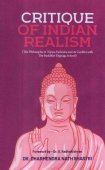Shashadhara, Śaśadhara, Shasha-dhara: 12 definitions
Introduction:
Shashadhara means something in Hinduism, Sanskrit, Marathi. If you want to know the exact meaning, history, etymology or English translation of this term then check out the descriptions on this page. Add your comment or reference to a book if you want to contribute to this summary article.
The Sanskrit term Śaśadhara can be transliterated into English as Sasadhara or Shashadhara, using the IAST transliteration scheme (?).
In Hinduism
Ganitashastra (Mathematics and Algebra)
Source: archive.org: Hindu MathematicsŚaśadhara (शशधर) represents the number 1 (one) in the “word-numeral system” (bhūtasaṃkhyā), which was used in Sanskrit texts dealing with astronomy, mathematics, metrics, as well as in the dates of inscriptions and manuscripts in ancient Indian literature.—A system of expressing numbers by means of words arranged as in the place-value notation was developed and perfected in India in the early centuries of the Christian era. In this system the numerals [e.g., 1—śaśadhara] are expressed by names of things, beings or concepts, which, naturally or in accordance with the teaching of the Śāstras, connote numbers.

Ganitashastra (शिल्पशास्त्र, gaṇitaśāstra) refers to the ancient Indian science of mathematics, algebra, number theory, arithmetic, etc. Closely allied with astronomy, both were commonly taught and studied in universities, even since the 1st millennium BCE. Ganita-shastra also includes ritualistic math-books such as the Shulba-sutras.
Languages of India and abroad
Marathi-English dictionary
Source: DDSA: The Molesworth Marathi and English Dictionaryśaśadhara (शशधर).—m S śaśāṅka m S śaśī m (S) (That has a hare, either as an emblem on his banners, or, fancifully, on his face:--the spots on the moon's disk being fancied to bear the figure of a hare.) Poetical names for the moon. The last word is common.
Source: DDSA: The Aryabhusan school dictionary, Marathi-Englishśaśadhara (शशधर).—m The moon.
Marathi is an Indo-European language having over 70 million native speakers people in (predominantly) Maharashtra India. Marathi, like many other Indo-Aryan languages, evolved from early forms of Prakrit, which itself is a subset of Sanskrit, one of the most ancient languages of the world.
Sanskrit dictionary
Source: DDSA: The practical Sanskrit-English dictionaryŚaśadhara (शशधर).—
1) the moon; उत्पातधूमलेखाक्रान्तेव कला शशधरस्य (utpātadhūmalekhākrānteva kalā śaśadharasya) Mālatīmādhava (Bombay) 9.49; प्रसरति शशधर- बिम्बे (prasarati śaśadhara- bimbe) Gītagovinda 7.
2) camphor. °मौलिः (mauliḥ) an epithet of Śiva.
Derivable forms: śaśadharaḥ (शशधरः).
Śaśadhara is a Sanskrit compound consisting of the terms śaśa and dhara (धर).
Source: Cologne Digital Sanskrit Dictionaries: Shabda-Sagara Sanskrit-English DictionaryŚaśadhara (शशधर).—m.
(-raḥ) 1. The moon. 2. Camphor. E. śaśa a hare, and dhara having; either as an emblem on his banners, or fancifully, as the spots on the moon’s face.
Source: Cologne Digital Sanskrit Dictionaries: Benfey Sanskrit-English DictionaryŚaśadhara (शशधर).—[śaśa-dhara], śaśabhṛt śaśa -bhṛ + t, śaśāṅka śaśāṅka, i. e. śaśa -aṅka, and śaśin śaśin, i. e. śaśa + in, m. The moon, [Bhartṛhari, (ed. Bohlen.)] 1, 40 (dhara); [Pañcatantra] i. [distich] 107 (śaśāṅka); [Vikramorvaśī, (ed. Bollensen.)] [distich] 8 (śaśin); 109 (śaśin); see śaśa.
Source: Cologne Digital Sanskrit Dictionaries: Cappeller Sanskrit-English DictionaryŚaśadhara (शशधर).—[masculine] the moon (hare-holder).
Source: Cologne Digital Sanskrit Dictionaries: Aufrecht Catalogus Catalogorum1) Śaśadhara (शशधर) as mentioned in Aufrecht’s Catalogus Catalogorum:—Kiraṇāvalī alaṃk.
2) Śaśadhara (शशधर):—grandson of Rudrasiṃha: Rāghavapāṇḍavīyaṭīkā.
3) Śaśadhara (शशधर):—correctly śaśidhara wrote by order of king Amarasiṃha: Rāghavapāṇḍavīyaprakāśa. Edited in Kāvyamālā 1896, where, for some unknown reason, the introductory verses are omitted.
Source: Cologne Digital Sanskrit Dictionaries: Monier-Williams Sanskrit-English Dictionary1) Śaśadhara (शशधर):—[=śaśa-dhara] [from śaśa > śaś] a m. ‘bearer of hare-marks’, the moon, [Kāvya literature]
2) [v.s. ...] camphor, [Monier-Williams’ Sanskrit-English Dictionary]
3) [v.s. ...] Name of various authors, [Catalogue(s)]
4) [=śaśa-dhara] [from śaśa > śaś] b m. (with vāra) Monday, [Inscriptions]
Source: Cologne Digital Sanskrit Dictionaries: Yates Sanskrit-English DictionaryŚaśadhara (शशधर):—[śaśa-dhara] (raḥ) 1. m. The moon.
[Sanskrit to German]
Sanskrit, also spelled संस्कृतम् (saṃskṛtam), is an ancient language of India commonly seen as the grandmother of the Indo-European language family (even English!). Closely allied with Prakrit and Pali, Sanskrit is more exhaustive in both grammar and terms and has the most extensive collection of literature in the world, greatly surpassing its sister-languages Greek and Latin.
Kannada-English dictionary
Source: Alar: Kannada-English corpusŚaśadhara (ಶಶಧರ):—[noun] = ಶಶಿ [shashi].
Kannada is a Dravidian language (as opposed to the Indo-European language family) mainly spoken in the southwestern region of India.
See also (Relevant definitions)
Partial matches: Dhara, Shasha.
Starts with: Shashadhara acarya, Shashadharacarya, Shashadharamala, Shashadharamauli, Shashadharamukhi, Shashadharaprabha.
Ends with: Khamdashashadhara.
Full-text: Shashadhariya, Shashabhrit, Shashadharamala, Shashadharaprabha, Shashadharamukhi, Shashadharamauli, Shashadharacarya, Nyayamimamsaprakarana, Nyayanaya, Shashadhara acarya, Nyayaratnaprakarana, Rudrasimha, Shasha, Nyayadipika, Nyayasiddhantadipa, Prabha, Raghavapandaviya, Cintamani, Kiranavali.
Relevant text
Search found 7 books and stories containing Shashadhara, Śaśadhara, Shasha-dhara, Sasadhara, Śaśa-dhara, Sasa-dhara; (plurals include: Shashadharas, Śaśadharas, dharas, Sasadharas). You can also click to the full overview containing English textual excerpts. Below are direct links for the most relevant articles:
Chaitanya Bhagavata (by Bhumipati Dāsa)
Verse 1.6.112 < [Chapter 6 - The Lord Begins Studying and His Childhood Mischief]
Verse 3.5.348 < [Chapter 5 - The Pastimes of Nityānanda]
Verse 2.1.125 < [Chapter 1 - The Beginning of the Lord’s Manifestation and His Instructions on Kṛṣṇa-saṅkīrtana]
Bhajana-Rahasya (by Srila Bhaktivinoda Thakura Mahasaya)
Text 18 < [Chapter 8 - Aṣṭama-yāma-sādhana (Rātri-līlā–prema-bhajana sambhoga)]
Manasara (English translation) (by Prasanna Kumar Acharya)
A History of Indian Philosophy Volume 1 (by Surendranath Dasgupta)
Part 7 - The Vaiśeṣika and Nyāya Literature < [Chapter VIII - The Nyāya-Vaiśeṣika Philosophy]
A Dictionary Of Chinese Buddhist Terms (by William Edward Soothill)
Preceptors of Advaita (by T. M. P. Mahadevan)
Related products
